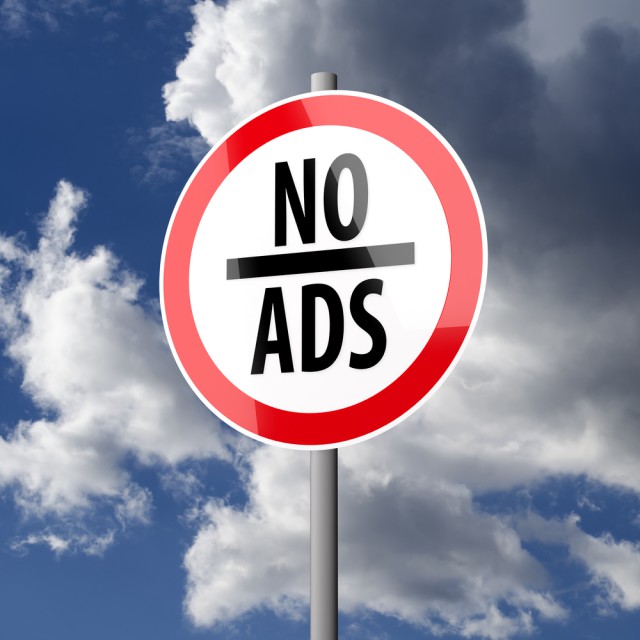
There’s no avoiding it; ad-blocking is a direct result of consumer demand. Adland has had its own way for too long and now the traffic is two-way we should view this as an opportunity to hit the reset button.
Let’s get this in context however; announcements such as Apple’s recent iOS9 update may have raised the profile of ad-blocking, but uptake is far from exponential. We’re not facing the Adpocalypse here, what we’re looking at is the balance being redressed.
This isn’t to condone the behavior of the ad-blockers, for example advertisers being able, or more accurately being required to pay to allow "acceptable ads" through feels like something out of a to-be aired season of the Sopranos. But if the battle playing out between London black cabs and Uber teaches us anything, it is that when confronted with the conflicting interests of inevitable consumer demand, companies need to be proactive as opposed to reactive and maintain an open minded approach.
The rise of ad-blocking on smartphones and tablets gives advertisers and publishers a prime opportunity, to proactively reassess their approach to targeting consumers and to optimize the content that they provide. An engaged consumer is a disengaged ad-blocker, and the need for advertisers to engage their target audience is now stronger than ever.
A Return to Relevancy
Advertising started out as a device for product discovery and brand reinforcement, but from a consumer standpoint it has become more about being hounded down the purchase funnel, so it’s no real surprise they’re turning to the ad-blockers in ever increasing numbers.
It takes much more effort to track where a user might go next, rather than constantly reminding them where they have been, but get that right and consumers will elect to keep up with relevant brands, deals and events, making ad-blockers irrelevant.
Good content is good content. Branded or otherwise, if consumers enjoy what they see and feel that it speaks to them, they will not be compelled to block it, the onus is therefore on us to effectively target audiences based on their likes and dislikes -- actual and perceived, current and predicted -- ensuring that we serve ads that match the needs and interests of consumers. Advertising is not one-size-fits-all.
Less Disruption
Improved ad relevancy through audience targeting is only the first step, ad formats also need to be more sympathetic towards the user experience as it is sighted as being the number one reason for ad-blocker downloads.
Both publishers and advertisers need to rethink the placement of banners, interstitials and video. Advertising formats must offer a less-disruptive experience.
Publishers should therefore consider altering the formats they offer, in line with revenues from traditional advertising beginning to dwindle. Smart alternatives largely consist of exploring more native and decisional formats
Paywalls and Blocking Ad-Blocking
Ad-blocking shouldn’t be allowed to beckon in the end of the free Internet, but we’re already seeing publishers combating revenue threats with the launch of paywalls, or like City A.M. blocking users to their website who have ad-blockers installed.
This bold move showcases the drastic measures such publications, which rely so heavily on advertising to fund their journalism, are willing to take to remain equitable while the industry comes to terms with how to deal with ad-blocking in the longer term. This game of cat and mouse clearly isn’t sustainable and it really doesn’t address the problem.
Other brands, such as The Guardian have elected to undertake a more sustainable approach, fundamentally changing their business model by optimizing their content for the likes of Facebook, therefore encouraging shares and blurring the editorial-commercial boundary.
Educating Consumers
Potential visitors to the City A.M. website with ad-blockers installed are redirected to a Q&A that educates them on on the economics of advertising. Educating consumers is important in the process of navigating ad-blocking, as there is a limit to what publishers can deliver for literally no return.
At present, there is a strong argument for the industry to better-educate mobile users on the economics of advertising, as consumers are likely to tolerate adverts if the alternative is having to pay for their favorite content.
The turn-key moment will come when enough consumers wake up to their choices regarding content consumption, and the willingness of the majority to either a) pay publishers for ad-free content, b) view it in different mediums, or c) own, manage and monetize their own data, can be properly measured.
The Next Move
Once the issues around ad-blocking and the associated knock-on effects come into focus, both publishers and advertisers will be in a better position to plan their next moves. The future of mobile ad-blocking is quite literally in consumers’ hands, being determined by how they choose to experience content.
The best solution for the industry is to work towards a situation where ad-blockers become irrelevant for the mass market. More sympathetic, less disruptive advertising formats need to be further enhanced with improved relevancy through considered audience-targeting.
If we can get that right then the ad-blockers will be switched off and the pay walls will come down.
Jon Williams, Marketing Director EMEA, at Opera Mediaworks.
Published under license from ITProPortal.com, a Net Communities Ltd Publication. All rights reserved.
Photo Credit: Quka/Shutterstock

